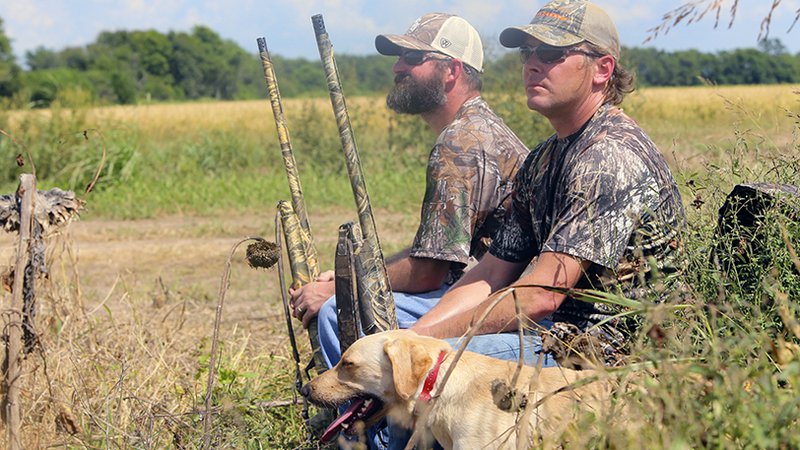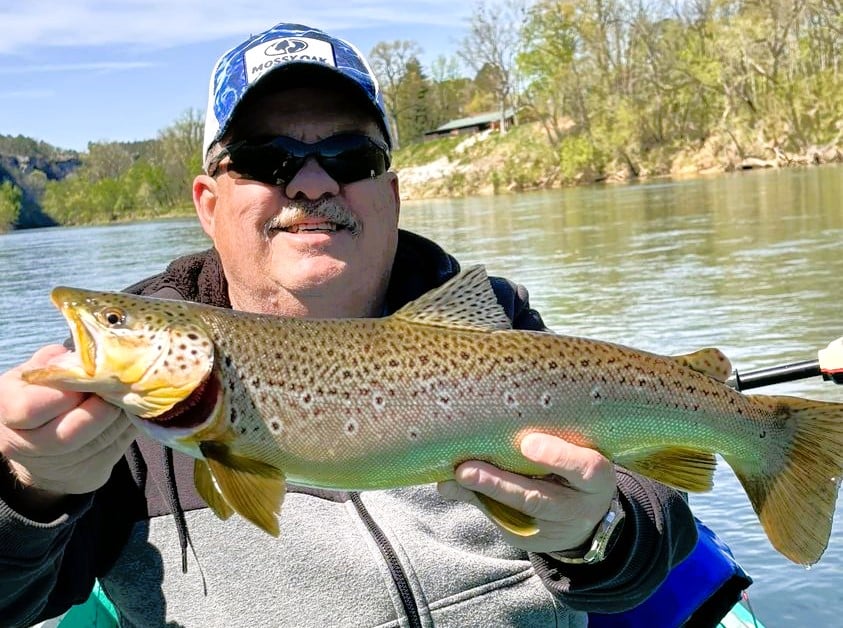Dove hunters have many choices of public fields available through AGFC
BY Jim Harris
ON 08-21-2019

Aug. 21, 2019
Jim Harris
Managing Editor Arkansas Wildlife Magazine
LITTLE ROCK – Hunters will have many public options in their quest for dove when the season opens Sunday, Sept. 1.
“In all, we have more than 80 dove fields for nearly 700 acres on 21 different WMAs scattered across the state,” said Garrick Dugger, assistant chief of the Arkansas Game and Fish Commission’s Wildlife Management Division. “There is opportunity to get out and enjoy the first fall hunting season in all four corners of the state again this year on public land.”
The AGFC recently concluding its application process and drawing for its four private lands permits, but the public WMA fields require no permit fee and have acreage specifically designed to draw in doves through a variety of approaches: sunflowers, millet and top-sown wheat. All that’s required, besides possessing a valid Arkansas hunting license, is that hunters download and carry a free WMA access permit through www.agfc.com.
In addition to the public fields on the 21 WMAs, the AGFC has partnered withi the Cache River National Wildlife Refuge for hunting on two tracts of land totaling 40 acres prepared for doves. Maps to those fields and all of the WMA dove hunting fields can be found at https://www.agfc.com/en/hunting/migratory-birds/dove/public-dove-fields. The QR codes on the website maps provide directions to the fields on a smartphone in Google maps.
Hunters should be aware that hunting the Cache River NWR requires a free carry/sign permit available through the U.S. Fish and Wildlife Service website or at the NWR’s main office at Gregory, near Augusta. Also, only non-toxic shot (i.e., steel shot) is allowed for hunting the NWR. Lead-shot field load is acceptable while hunting dove in WMAs.
Dove fields on WMAs are available on a first-come, first-served basis. WMA acreage put into dove fields is relatively small because most hunters only pursue doves the first few days of the season. However, after opening weekend of dove season, many wildlife species feed in the fields, particularly those that were top-sown with winter wheat.
One WMA typically hunted in past years was not prepared this year because of no access to the field; trees on private property fell over the road that leads to this particular field on Galla Creek WMA.
“Everything else is a go,” Dugger said. “We are good to go on everything at this point. What happens the next two weeks in terms of weather, I can’t predict. But everything is coming together to have a great hunt on September 1st. We’ll have the food sources available as the doves migrate through the state. Dove season is special because it signals a new year of hunting, and wingshooting is exciting. I expect a lot of Arkansas hunters are looking forward to it too after several months away from hunting.”
The season for mourning dove, white winged dove and Eurasian collared-dove runs Sept. 1 to Oct. 27, then resumes Dec. 14 through Jan. 15, 2020. The daily limit of mourning and white-winged dove is 15, with a possession limit of 45. There is no daily bag limit or possession limit for Eurasian collared-dove. Visit https://www.agfc.com/en/hunting/migratory-birds/dove/dove-hunting-regulations for a list of regulations pertaining to dove hunting.
Here is a look at WMAs (and NWR) by region with fields prepared for doves (visit www.agfc.com/en/hunting/migratory-birds/dove/public-dove-fields for precise location maps) to plan your hunt. All fields are set to open 30 minutes before sunrise on Sunday, Sept. 1. Some WMAs listed have multiple fields within the total acreage listed:
CENTRAL: Camp Robinson SUA, 19 acres of sunflowers and wheat
EAST-CENTRAL: Cache River NWR (Jackson, Monroe, Prairie, Woodruff), 40 acres of sunflowers; Steve N. Wilson Raft Creek Bottoms WMA (White County), 39 acres of wheat
NORTHEAST: Big Lake WMA (Mississippi County), 5 acres of sunflowers; Dave Donaldson Black River WMA (Clay, Greene and Randolph counties), 22 acres of sunflowers and wheat; Shirey Bay Rainey Brake (Lawrence County), 38 acres of sunflowers; St. Francis Sunken Lands WMA (Clay, Craighead, Greene, Poinsett counties), 10 acres of sunflowers
NORTHWEST: Wedington WMA (Benton, Washington counties), 32 acres of sunflowers and wheat
SOUTHEAST: Freddie Black Choctaw Island WMA (Desha), 47 acres of wheat; George H. Dunklin Jr. Bayou Meto WMA (Arkansas, Jefferson counties), 32 acres of wheat; Trusten Holder WMA (Arkansas, Desha), 4 acres of wheat
SOUTHWEST: Hope Upland WMA (Hempstead), 55 acres of wheat; Poison Springs WMA (Nevada, Ouachita counties), 10 acres of wheat; Rick Evans Grandview Prairie WMA (Hempstead), 80 acres of wheat
WEST: Frog Bayou WMA (Crawford County), 22 acres of millet and wheat; Fort Chaffee WMA (Crawford, Franklin, Logan, Sebastian), 32 acres of wheat; Ozark Lake WMA (Crawford, Franklin, Sebastian), 17 acres of wheat
WEST-CENTRAL: Dardanelle WMA (Franklin, Johnson, Logan, Pope and Yell counties), 12 acres of wheat; Ed Gordon Point Remove WMA (Conway, Pope counties), 63 acres of wheat; J. Perry Mikles WMA (Logan County), 6 acres of wheat; Nimrod Lloyd Millwood WMA (Perry, Yell counties), 30 acres of proso millet and wheat; Petit Jean River WMA (Yell County), 31 acres of wheat
Recent News

Arkansas Wildlife Weekly Fishing Report
Apr. 18, 2024
Subscribe to Our Weekly Newsletter E-mails
Don’t miss another issue. Sign up now to receive the AGFC Wildlife Weekly Newsletter in your mailbox every Wednesday afternoon (Waterfowl Reports are published weekly during waterfowl season and periodically outside the season). Fishing Reports arrive on Thursdays. Fill in the following fields and hit submit. Thanks, and welcome!

